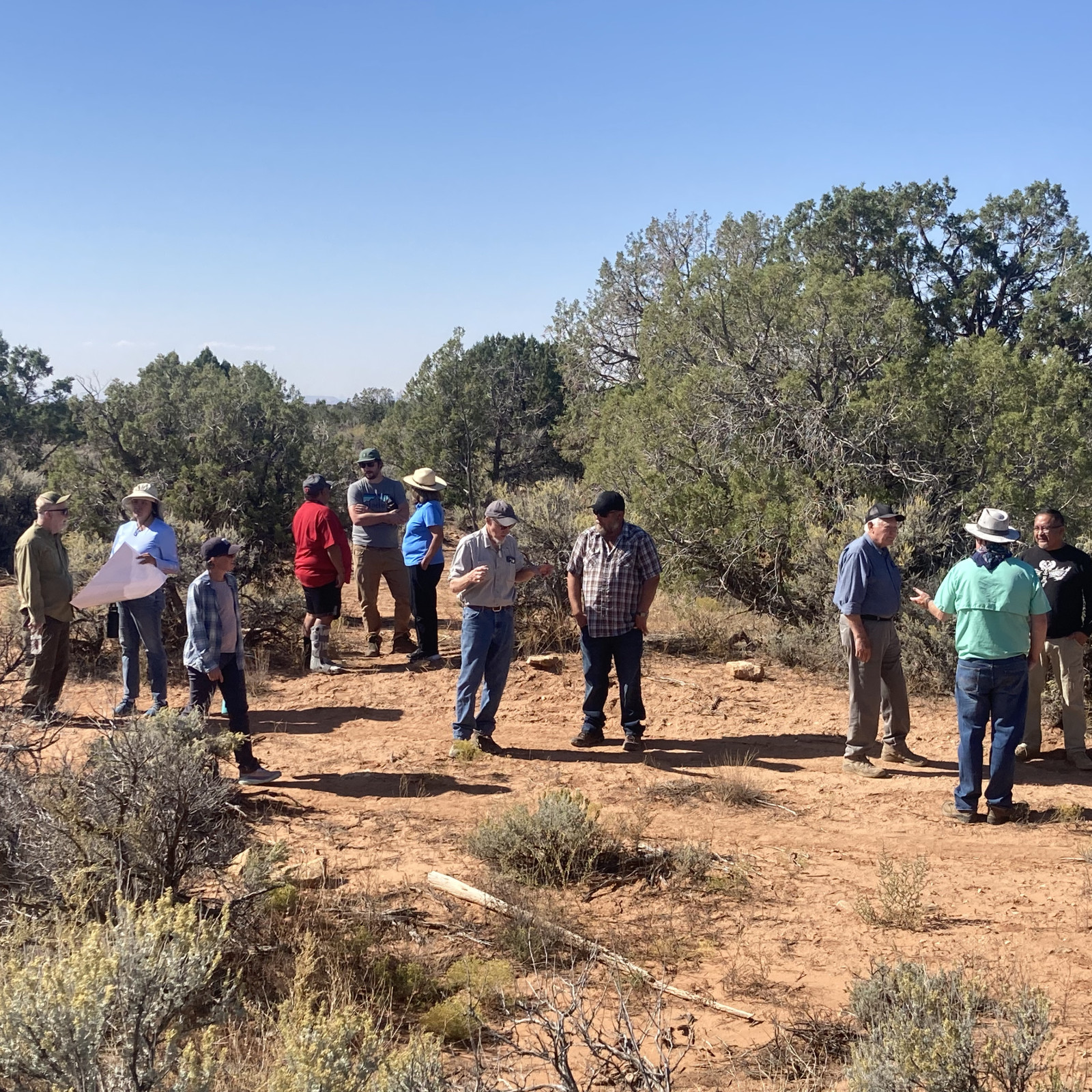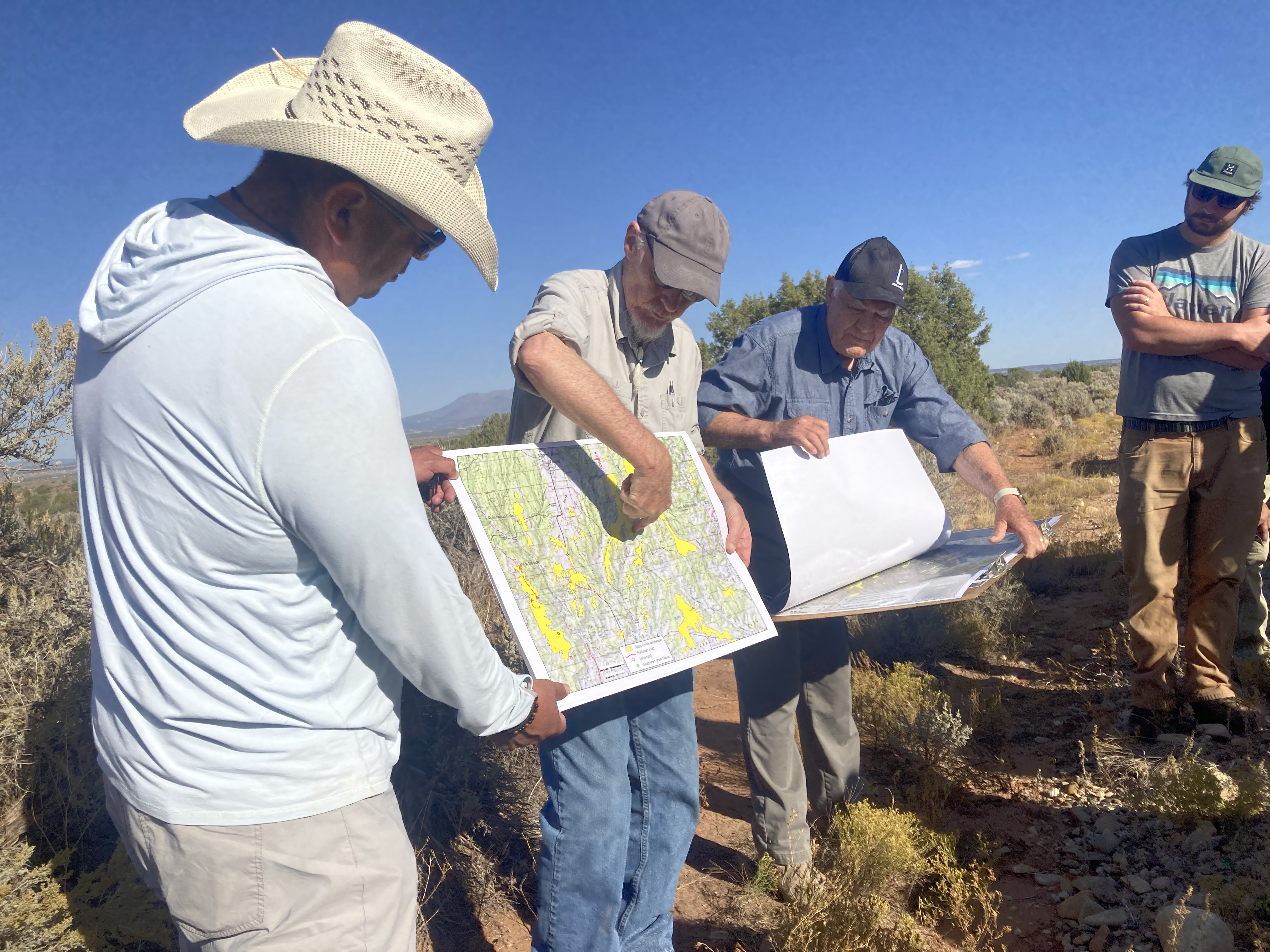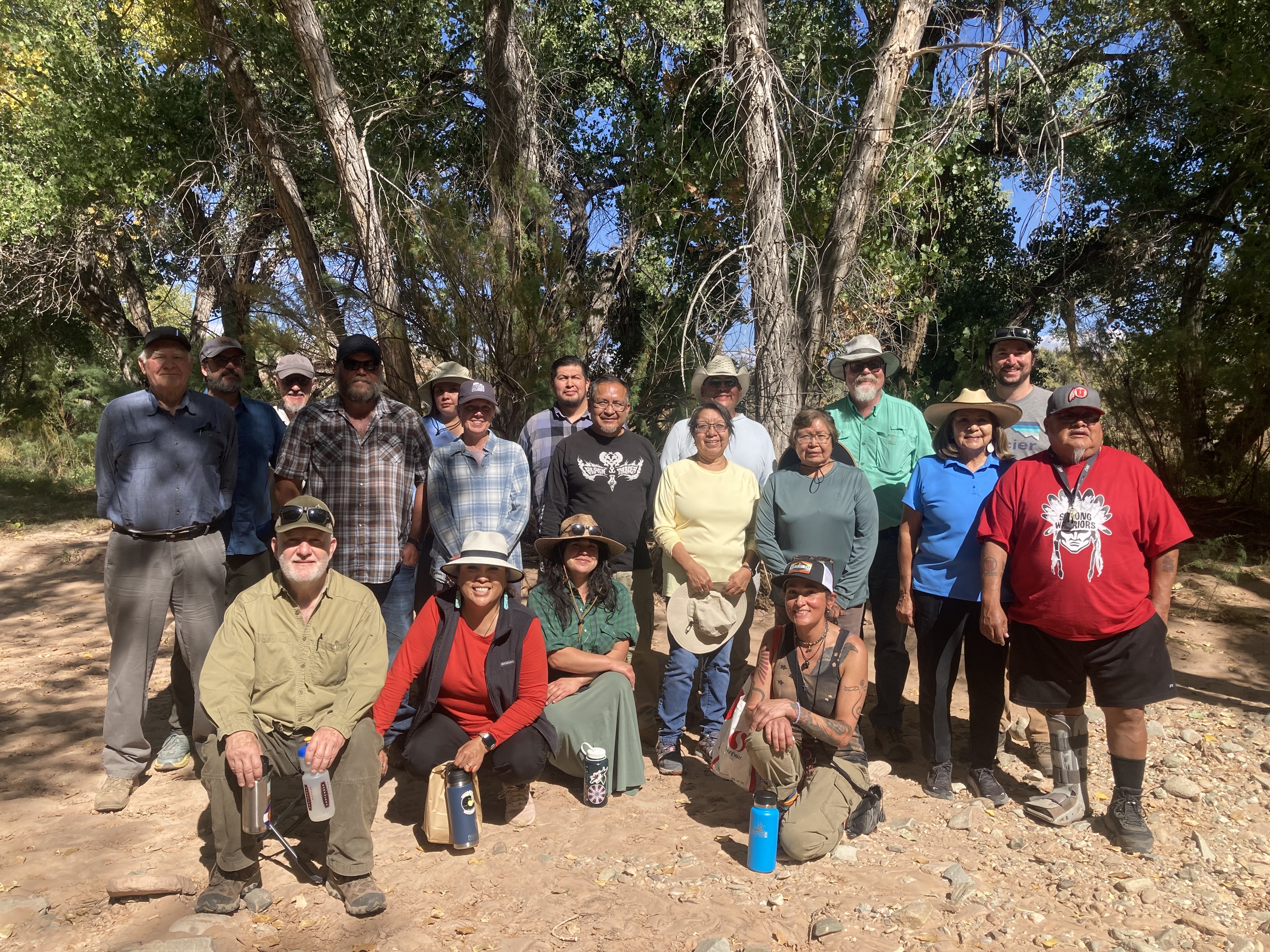
In early October, Bears Ears Partnership staff members headed to Monticello, Utah, where they were joined by Tribal, nonprofit, and agency partners for the Fourth Annual Tribal Gathering to protect the “Lands Between.”
For several years now, BEP and partners have been campaigning to protect The Lands Between, a temporary name for an area that holds immense cultural significance, encompassing the traditional lands of the Hopi, Zuni, Acoma, Ute, Diné (Navajo), Paiute, and other Indigenous peoples.
This year’s gathering welcomed partners from the Pueblo of Zuni, Hopi Tribe, Navajo Nation, Ute Mountain Ute, Utah Diné Bikéyah, National Parks Conservation Association, National Park Service, Conservation Lands Foundation, Crow Canyon Archaeological Center, Archaeology Southwest, and other archaeological and agency partners. The gathering provided the invaluable opportunity to come together and learn from the landscape, as well as discuss strategic next steps.
The first full day of the gathering, Tribal leaders and archaeologists facilitated a tour of several key cultural sites, offering cultural historical context as well as explaining archeological findings. These landscape visits are an important way to connect Tribal leaders to their ancestral landscapes.
This year’s visit included stops at important, accessible sites, as well as some important time getting a broader sense of the overall landscape, both natural and cultural. After a full day out on this vast landscape, attendees gathered the next day for a round of presentations and discussions about strategies for continued protection of this historically significant cultural landscape.

During the full-day indoor presentations, BEP archaeologist Kenny Wintch offered an historic context of this landscape, which is primarily significant for its place in the Ancestral Pueblo world. Erika Pollard of National Parks Conservation Association and Sarah Stellberg of Advocates West (and a BEP boardmember) gave an overview of the threats and litigation opportunities for The Lands Between. This area is the most archaeologically rich set of public lands in the United States open for oil and gas leasing and other extractive uses, underscoring the need for continued vigilance. Nada Culver, Principal Deputy Director of the Bureau of Land Management, presented on potential National Monument alternatives to protect The Lands Between, such as Areas of Critical Environmental Concern. Attendees then discussed potential next steps, underscoring the importance of Tribal leadership and input into ongoing research, policy, archeological and other efforts.
Defense of this landscape is ongoing, as are the developmental threats to it. Between 2018 and 2019, the Trump Administration offered more than 100,000 acres of this landscape for lease to oil and gas interests—often with minimal input from Tribes and the public. BEP sued (twice) for cancellation of the 2018 leases, and the Pueblo of Acoma protested the 2019 leases. A January 2023 stipulated settlement resulted in NEPA and NHPA re-analysis of the 2018 leases, and this re-analysis resulted in cancellation of the 25 lease parcels in or bordering the Lands Between – a total of 40,296.23 acres. Similarly, the BLM granted the Pueblo of Acoma’s protest of the 2019 leases. We believe that in both cases BLM did the right thing. Unfortunately, the lessees in both cases disagreed and appealed both cases to the Interior Board of Land Appeals (IBLA). The threat of other large-scale development persists, but the partnered campaign to defend this sacred landscape from those developments grinds onward.

The Lands Between sits between three different national monuments: Hovenweep National Monument (established in 1923), Canyons of the Ancients (established in 2000), and Bears Ears (established in 2016, and re-established in 2021). Despite not being formally linked to these monuments, it is clear that the 325,000 acres of the Lands Between form an integral part of a larger, contiguous cultural and sacred landscape that connects Chaco Canyon, Mesa Verde, Bears Ears, and beyond.
Davina Smith, who has been working for the past three years to protect these lands as an Independent Consultant with the National Parks Conservation Association, reflected: “These lands, deeply intertwined with Indigenous heritage, have taught me purpose and resilience, even as I witness the challenges of restoration and conservation. As a Diné woman, this work is more than a career; it’s a personal calling and an act of reclamation. Western conservation often views land through a utilitarian lens, but Indigenous wisdom reminds us that the land is inseparable from our identity. Protecting it is not about ownership—it’s about stewardship rooted in reciprocity and respect. At gatherings like this year’s, where Indigenous leaders, archaeologists, and conservationists come together, I find hope. These collaborations honor traditional knowledge, advance ecological understanding, and strengthen our shared commitment to safeguarding these sacred places for generations to come.”
Stay tuned for more updates about this campaign, including calls to action.

